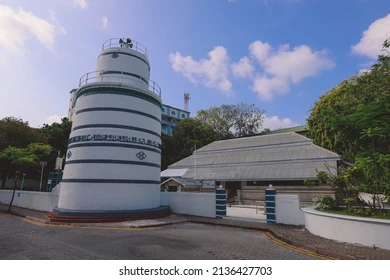
The oldest buildings still standing in Male are the minaret next to the mosque (1675) and the Hukuru Miskiiy (1658). Hukuru Miskiiy has been the most venerated place of worship for many centuries and is an important part of Maldivian culture and history. It also serves as a testament to the craftsmanship of Maldivian artisans of that era.
Interlocking coral blocks with elaborate coral carvings are used to construct the mosque. The roof is supported by columns made of cut coral, and professional carpenters created the domed, ornate ceiling. Masterworks of traditional Maldivian lacquer and woodcarving may be found throughout the interior.
There is a 17th-century graveyard with elaborately carved tombs and tombstones in the space next to the mosque. The graves of women are identified by tombstones with rounded tops, whereas those of men are identified by tombstones with pointed tops. The tombstones’ gilded inscriptions suggest that this is a royal grave.
Hukuru Miskiiy’s distinctive architecture, unmatched historic legacy, and tongue-in-groove stone structure, which exhibits a highly developed building method at the time of its construction, led to its designation as a UNESCO World Heritage site in 2008. “The mosque and its other structures’ architecture, construction, and accompanying artistry represent the creative excellence and achievement of the Maldivian people,” states the UNESCO assessment.

